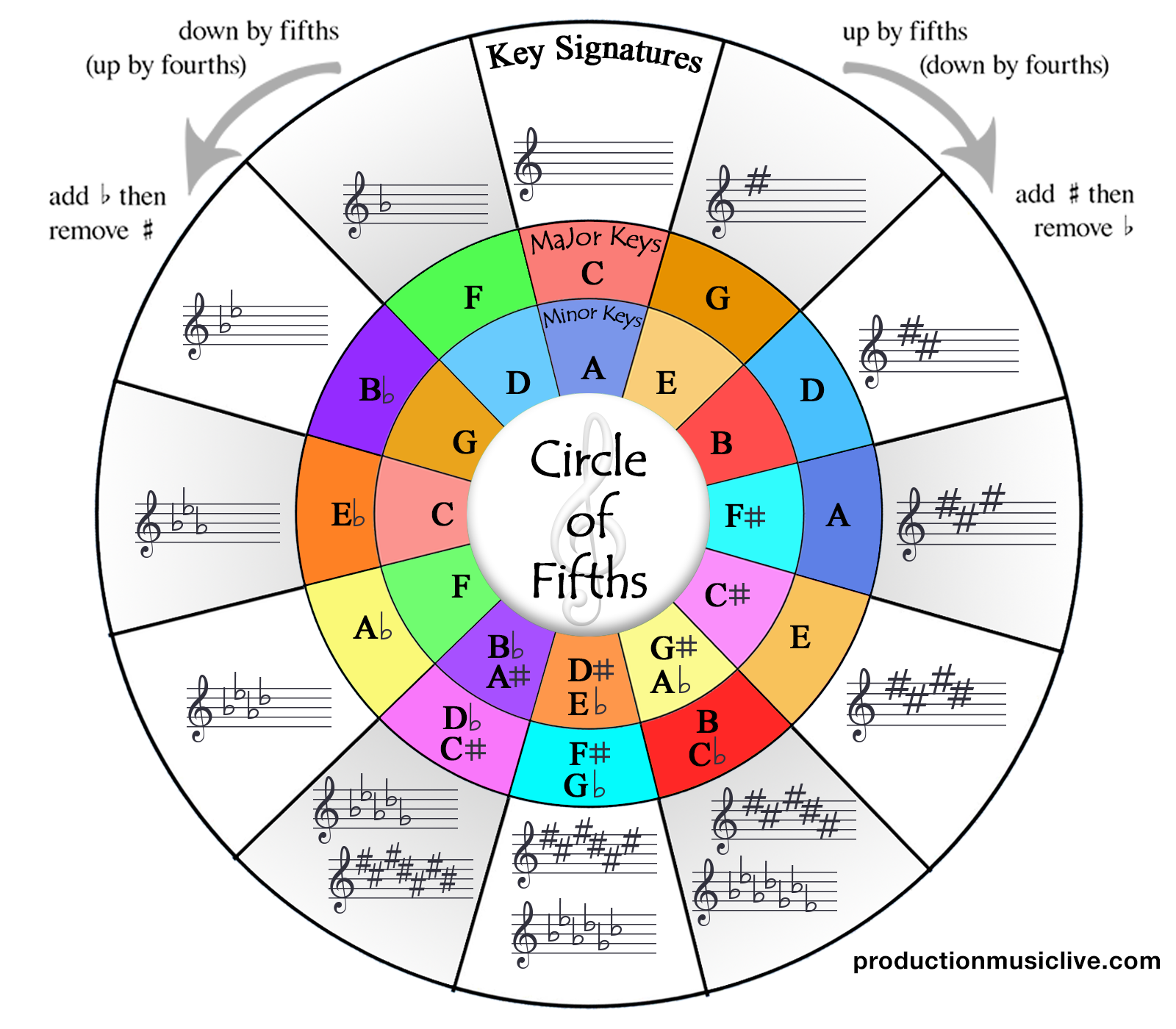


His creation is now commonly known as the Circle Of 5ths. So, it comes as no surprise that Pythagoras decided to take to music with a mathematical mind. From the number of times, the string vibrates to the number of notes on an instrument. The world is very mathematical and music doesn’t escape its grasp. This became known as the Pythagorean Circle (The Great Grandfather of the Circle of Fifths We Know Of Today).ĭifferent revisions and improvements were made by Nikolay Diletsky in the 1670s, and Johann David Heinichen in 1728, until finally, we reached the version we have today. He’d also defined exactly what an octave was, and divided it up into twelve half-steps. He was experimenting with different lengths of vibrating string and had discovered the mathematical relationships between pitch frequencies. The legend goes that it likely was started with Pythagoras in 600BC. The History of the Circle of Fifths and Where did it come from?

Then use this representation as a key to find our way between different keys easily. Even a way to visually create chords and know the notes in the chords. Imagine if visual representation of all the different keys and how they are related to each other. But what if there was a system that allowed you to know and learn about musical pitch (every note, scale, chord, and key) in an easy to understand diagram that could fit in the palm of your hand? That is the what the Circle Of Fifths can do for you. If it’s theory knowledge you’re after, this wonderful little wheel is about to become your best friend.The Circle of Fifths is confusing to many or scary to most. It’s pretty easy to become familiar with the Circle of Fifths, and there's a high resolution version of the circle right here, on.

The other three diatonic chords in the key are also right there in the smaller ‘relative minor’ circle:Īnd it really works! If you don’t believe us, just watch from 04:20 when this dude improvises a song immediately, using just a circle of fifths which he has tattooed on his right forearm. Because of how the circle is arranged, Chord V (E) and Chord IV (D) can be found immediately to either side. Which means you can make up a song immediately in any key just by looking at the chart. The layout groups the six diatonic chords of each key together in one area. Well, you can use the Circle of Fifths to figure out a chord progression in any key, and then take this knowledge and create your own chord progressions by experimenting with different patterns.īut the straight-up coolest thing about the Circle of Fifths is this. Read more: Why is a CD 74 minutes long? It's because of Beethoven > Sure, so how am I going to win my Grammy? The Circle of Fifths also has a nifty way to tell you exactly which those accidentals are:įinally, nestled snugly inside the major circle you find the relative minor keys - which have all the same accidentals as their major counterparts. Starting at the top in C major and moving clockwise, the adjacent keys are the most similar to each other the only difference between C major and G major is the addition of an F sharp, and to get to the next key, D major, you just add a C sharp.Īs you go round the circle clockwise you keep adding sharps, until you get to C sharp major, which has a whopping seven sharps.Ĭounter-clockwise you keep adding flats, right the way round to the heavily be-flatted C flat major. There’s a tonne of information packed into the Circle of Fifths, but it principally shows a map of keys.


 0 kommentar(er)
0 kommentar(er)
